When Everyone Has ChatGPT: How to Stay Ahead in the AI Arms Race

As AI tools like ChatGPT become ubiquitous, we’re seeing a democratization of content creation alongside the challenge of a deluge of AI generated fluff.
However, they bring a new challenge for marketers…how do you stand out when everyone has access to the same AI capabilities?
The numbers tell a compelling story.
- AI tools have increased content marketing ROI for 68% of businesses.
- 95% of marketing work done by agencies and creatives will be handled by AI, according to Sam Altman of OpenAI.
Yet there’s one key insight that many are missing.
This shift amplifies the value of human creativity and strategic thinking.
Those that misuse AI for content marketing could be prompting themselves into irrelevance:
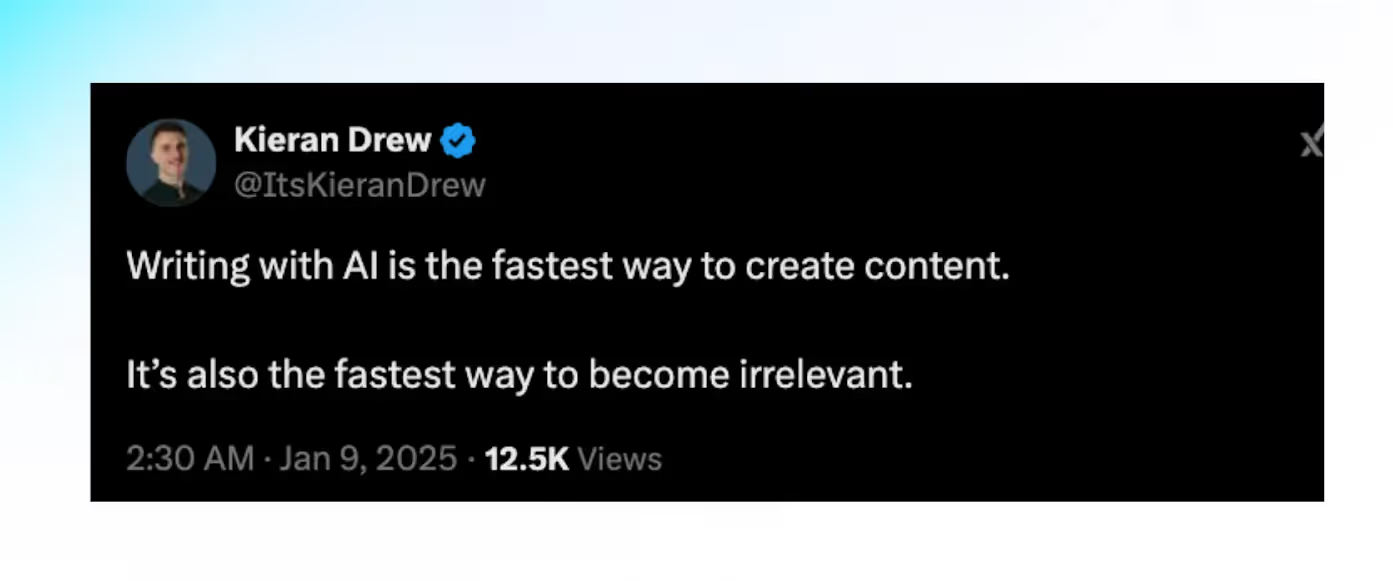
The real competitive advantage is building sophisticated workflows that combine AI efficiency with human creativity, brand expertise, and strategic vision.
This transformation alone is creating a new breed of marketing professional, one who uses AI as a force multiplier for ambitious marketing strategies that were previously impossible to execute at scale.
In this guide, we'll explore how forward-thinking marketing teams are staying ahead by building unique workflows and optimizing for real marketing impact.
The challenges of AI ubiquity
The rise of AI has made content creation more accessible, but it’s also flooded the market with similar content, making it harder to capture attention or drive real engagement.
Saturated content
As Chang Chen discussed in a recent webinar, "The SEO content direction is shifting to more comprehensive and in-depth articles because shallow, generic, and simple content will gradually be replaced by AI Overviews."
For example, a simple search query like “what is artificial intelligence” is now answered directly by Google’s AI Overviews, reducing the need for users to click on any links to gather information:
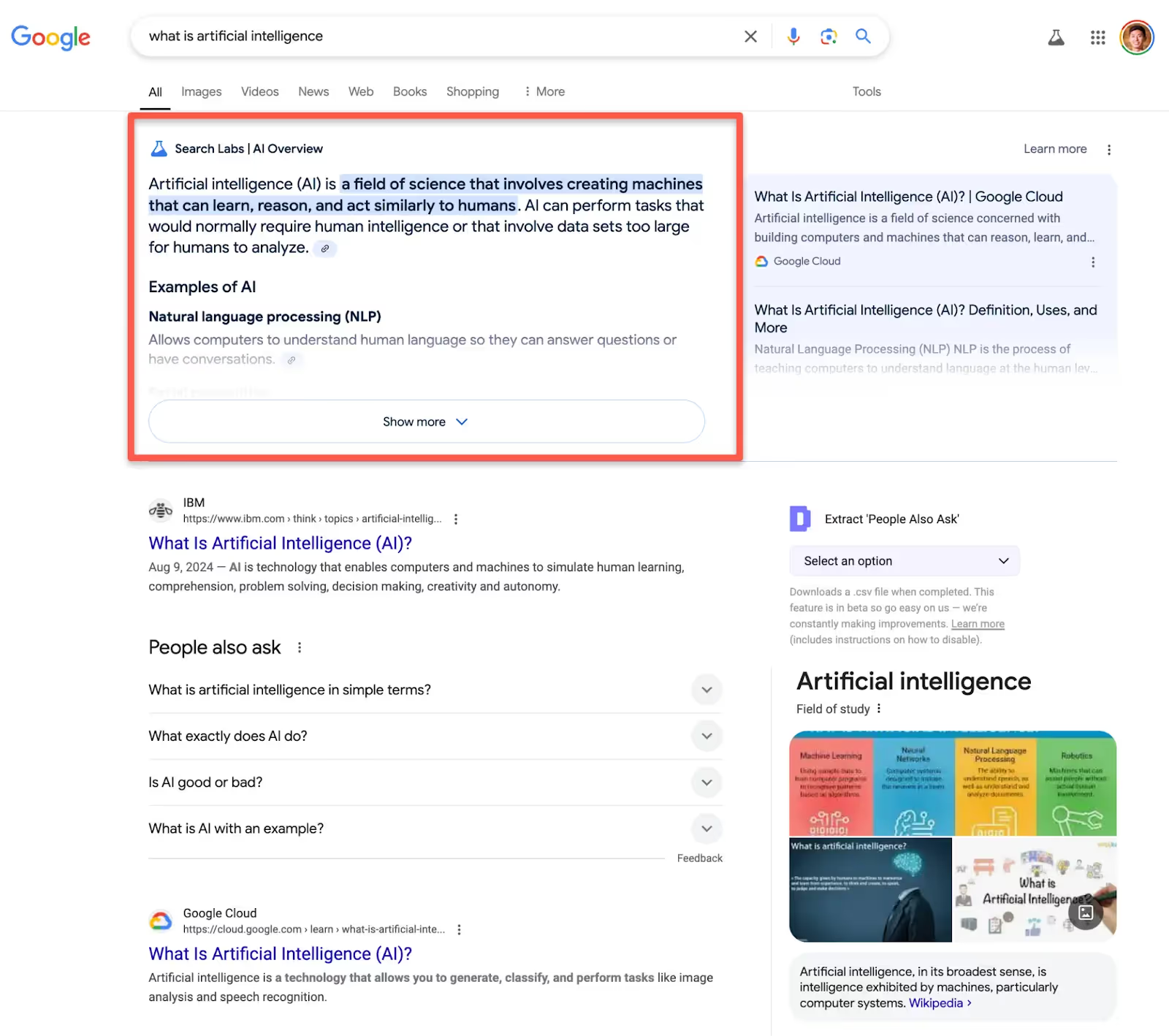
The ability to generate content at scale is now simply table stakes.
“Imagine content creation costs going to zero, allowing every marketer to operate with the same capabilities as Nike, even if they’re a two-person Shopify business. The leverage will be fantastic,” noted A16Z investor Andrew Chen.
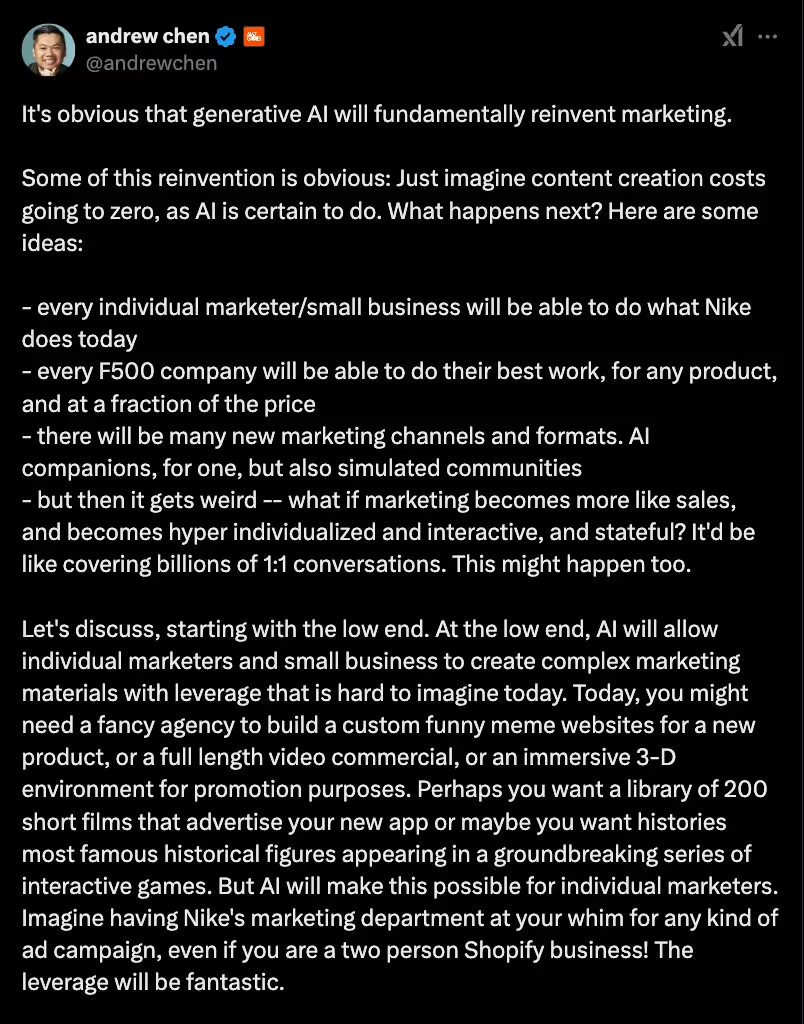
A staggering 83.2% of content marketers plan to use AI tools, increasing the volume of similar, generic content in every industry.
This makes it critical to find ways to stand out amidst the noise.
Consider the implications of AI in marketing:
- Basic AI-generated content is becoming increasingly commoditized
- Search engines are evolving to prioritize depth and expertise over volume
- Audiences are developing more sophisticated filters for identifying AI-generated content
Chang also shared this slide for the evolution of growth and content as it has been impacted by AI:
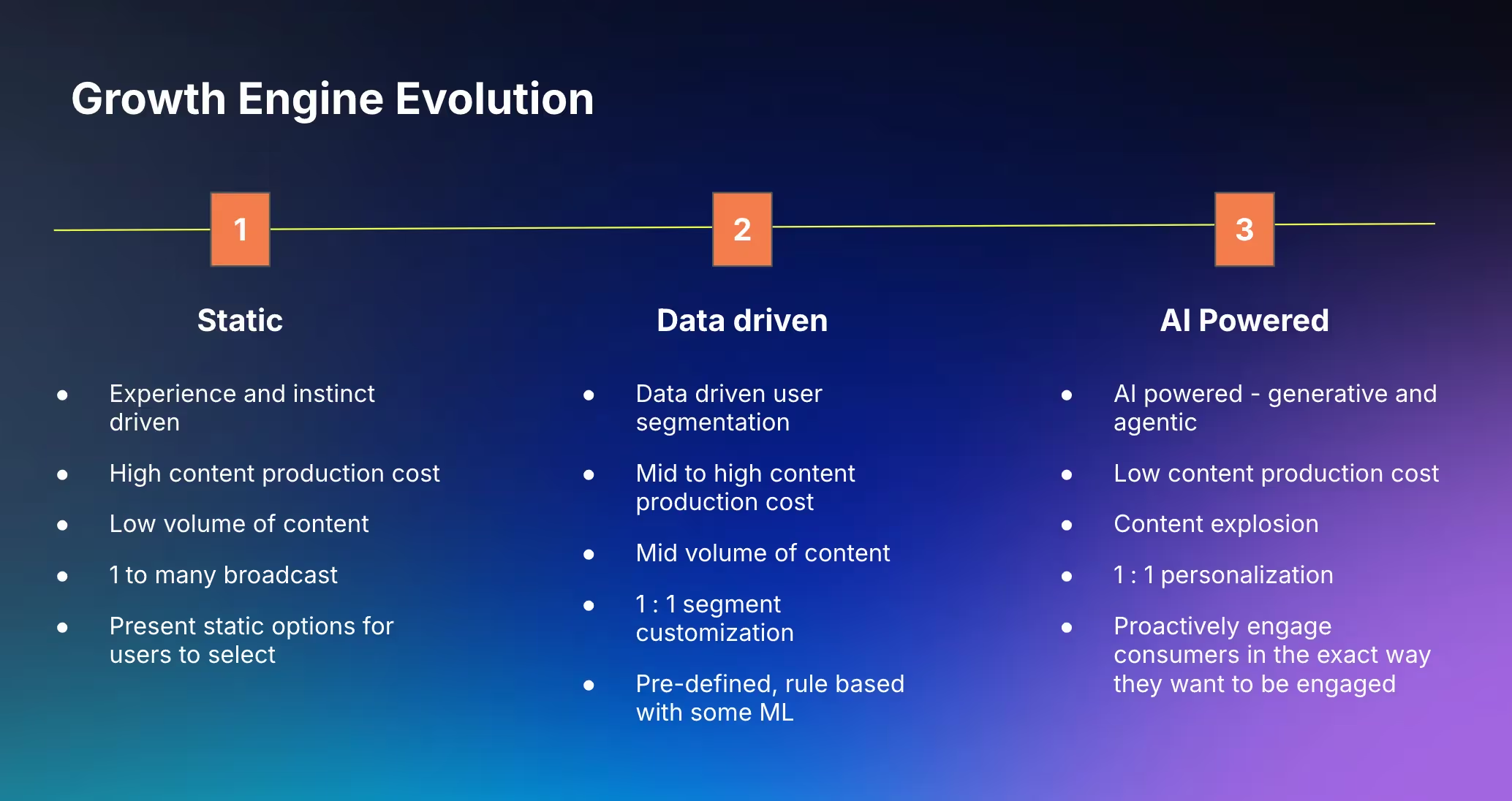
The accessibility paradox
The real challenge to succeeding with AI and content is found in developing the organizational muscle to:
- Create differentiated strategies that leverage AI in unique ways
- Build scalable workflows that maintain quality while increasing output
- Deploy AI in service of ambitious marketing goals that were previously impossible
While AI improves efficiency, reducing the time spent on tasks like blog writing by 30%, the real opportunity lies in using that saved time to add unique insights, refine content, and build a distinctive brand voice.
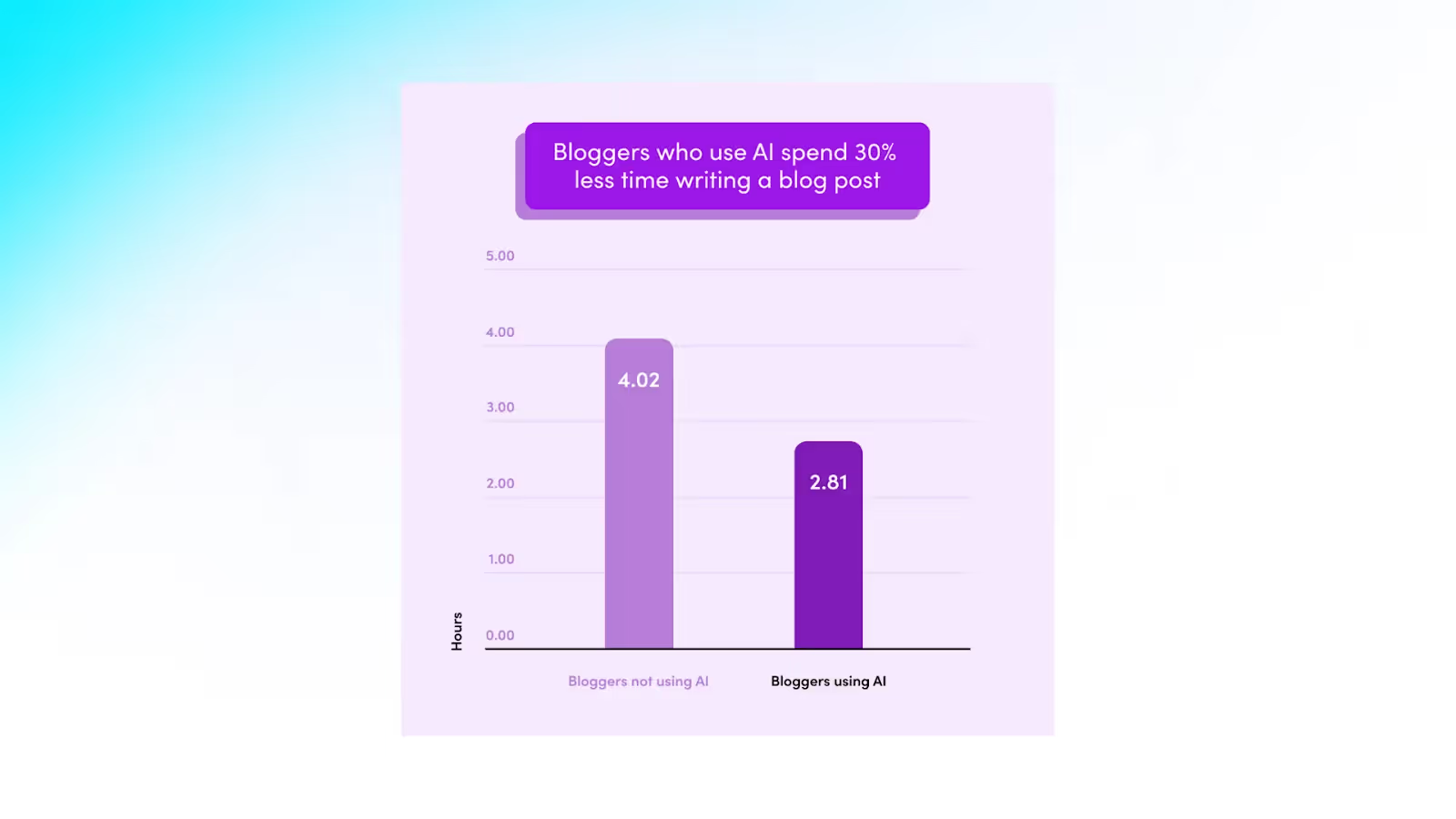
Build your own workflows with your own insights to differentiate
The key to standing out isn't just about having access to the best models - it's about creating systematic approaches that blend AI capabilities with your organization's unique strengths and expertise.
Chang emphasizes that building effective, scalable AI workflows requires grounding content in unique sources and following proven best practices.
The slide below highlights key inputs for creating differentiated content and actionable steps for scaling content efforts with AI:
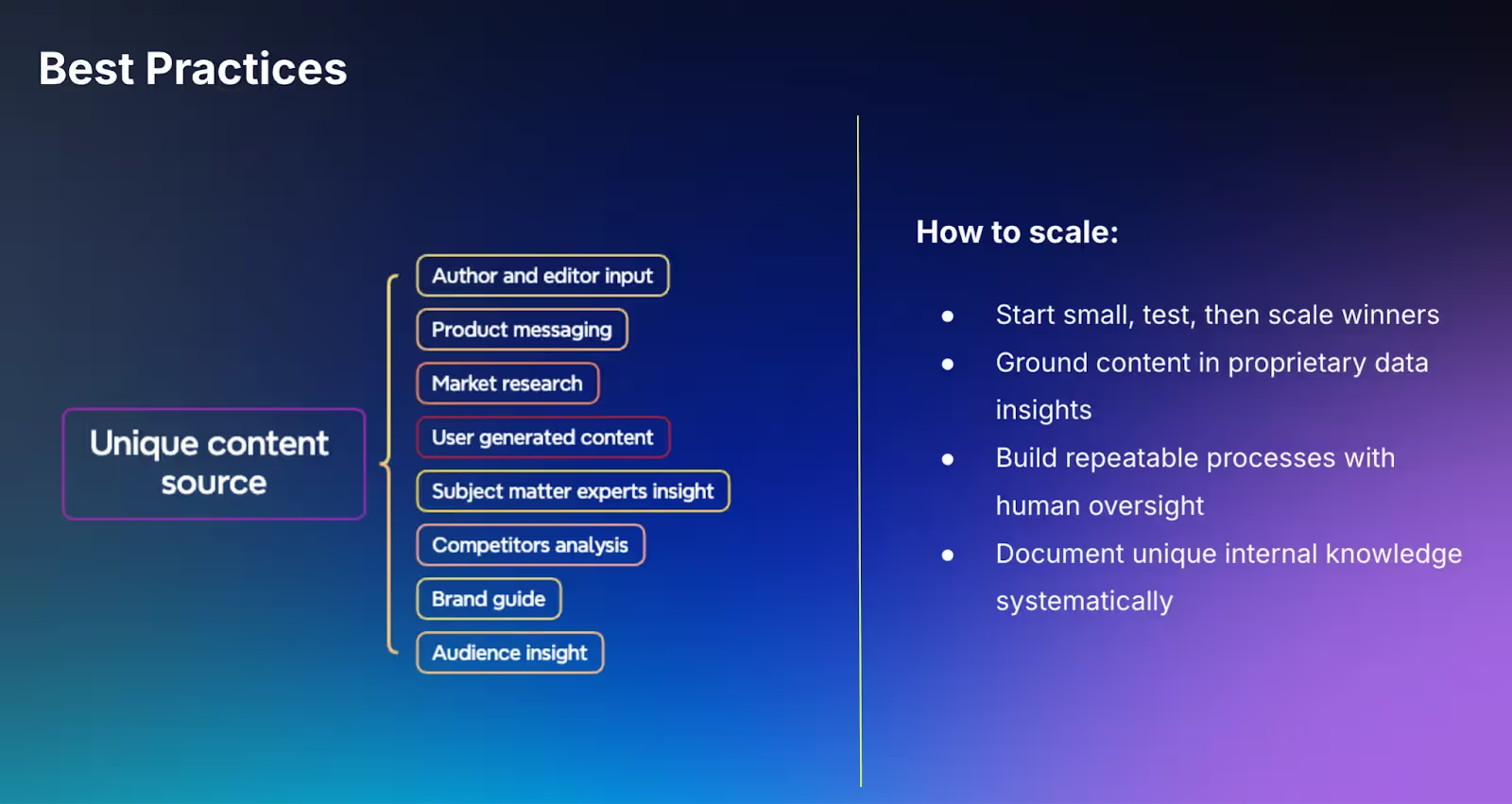
The unique data–opinions, proprietary data, user generated content, audience insights – these are the foundation for content that is differentiated from AI fluff.
Make AI your own with strategic brand inputs
Organizations that successfully differentiate their AI-powered content focus on three critical input layers:
- Brand knowledge architecture
- Documented brand voice and tone guidelines
- Historical high-performing content analysis
- Customer feedback and engagement patterns
- Competitive positioning and market differentiation
- Operational frameworks
- Clear quality benchmarks and success metrics
- Defined review and approval workflows
- Integration points with existing marketing systems
- Scalable content distribution strategies
- Strategic content multipliers
- Industry-specific expertise and insights
- Proprietary data and research
- Customer success stories and case studies
- Subject matter expert contributions
You can use brand kits and knowledge bases in AirOps to make this happen. These are the underlying principles of the New Rules of AI Content, which AirOps CEO Alex Halliday expands on here.
How to effectively integrate human overview with AI
The successful implementation of AI in marketing requires a thoughtful balance between automation and human oversight. Here's how to approach it effectively:
1. Define clear handoffs
At the foundation, we need to be crystal clear about where AI and humans interact. This means mapping out specific points where AI handles tasks and where human expertise needs to step in. For example, AI might draft initial content, but humans should review anything customer-facing or brand-critical. It's important to create documentation that clearly outlines these handoff points and establish systems that make it easy to track what's been reviewed and what needs attention.
2. Build scalable review systems
The review process itself needs to be built for scale. Not every piece of content needs the same level of scrutiny – a social media post might need a quick review, while a major campaign piece requires multiple sets of eyes. Having clear criteria for what "good" looks like helps keep quality consistent, even as you're handling more content. Teams should be able to quickly flag issues and see them addressed, creating a learning cycle that improves both human and AI performance over time.
3. Maintain strategic control
Perhaps most importantly, the strategic elements should remain firmly in human hands. While AI is excellent at executing tasks and generating content, humans need to guide the overall direction. This means keeping key decisions about brand voice, marketing strategy, and creative direction with your team. Regular audits of AI outputs help ensure everything stays aligned with your brand's goals and positioning.
Think of AI as a powerful tool that amplifies your strategy, rather than something that sets the strategy.
This approach ensures you get the best of both worlds: AI's ability to handle volume and repetitive tasks, combined with human creativity and strategic thinking where it matters most.
How to track your AI marketing efforts
The true value of AI-enhanced marketing lies in its measurable business impact. Top organizations are creating advanced frameworks to track, measure, and refine their AI-driven marketing efforts.
Use these success metrics for growth, quality & operations
Traditional content metrics often focus on output volume and surface-level engagement. In the AI era, top organizations are shifting toward more sophisticated performance indicators:
- Growth impact metrics
- Organic traffic velocity (rate of growth over time)
- Content-attributed revenue
- Customer journey progression
- Market share expansion
- Quality indicators
- Time on page for AI-generated content
- Return visitor rates
- Social sharing and backlink acquisition
- Customer feedback sentiment
- Operational excellence
- Content production efficiency
- Resource allocation optimization
- Time to market for new initiatives
- Team productivity enhancement
How to build performance-driven workflows with AI
These organizations are also creating systematic approaches to performance optimization.
Consider this framework for implementation:
- Establish Baseline Metrics
- Document current performance across key indicators
- Set realistic improvement targets
- Create measurement protocols
- Define success thresholds
- Design Testing Frameworks
- Create controlled experiments
- Implement A/B testing protocols
- Monitor quality indicators
- Track business impact metrics
- Optimize and Scale
- Identify winning patterns
- Refine workflows based on data
- Scale successful approaches
- Document best practices
Actionable strategies to combat content saturation
Content creators face a big challenge of standing out amid millions of competing articles, videos, and posts. The following are practical approaches to break through this noise and deliver genuine value to your intended audience
1. Focus on niche topics
Amid a see of generic AI sameness, focusing on niche topics is a powerful way to stand out.Instead of trying to rank for broad, highly competitive keywords like “content marketing” or “SEO tools,” focus on micro-niches that address specific pain points or questions your audience has.
For example, a SaaS company offering workflow automation might target “automation tools for B2B customer onboarding” instead of just “automation tools.”By specializing in niche topics, you position yourself as an authority in areas where audiences seek deep, specific expertise. Additionally, niche content tends to attract a more engaged and loyal audience, leading to better performance metrics like time on page and return visits.
Action steps:
- Research your audience's unique challenges and interests using tools like Google Trends, AnswerThePublic, or audience surveys.
- Create a list of micro-niches within your industry.
- Develop a content calendar focused on answering specific questions or solving particular problems in these niches.
2. Target long-tail keywords
Long-tail keywords are specific, multi-word phrases that often have lower search volume but higher conversion potential. Targeting terms like “how to use AI for personalized email campaigns” will help you attract a smaller but highly relevant audience. Long-tail keywords often signal a searcher’s intent, which can lead to higher-quality traffic and better conversion rates.
Action steps:
- Use tools like Semrush, Ahrefs, or Ubersuggest to identify long-tail keywords relevant to your niche.
- Analyze your competitors to find gaps in their keyword strategy and identify untapped opportunities.
- Incorporate long-tail keywords into your blog posts, service pages, and meta descriptions for better SEO performance.
- Regularly review and update your keyword strategy to align with evolving search behaviors and industry trends.
3. Create data-driven content
Leveraging proprietary data, original research, or unique case studies not only makes your content more credible but also more engaging.
For example, a SaaS company could share insights from internal usage data, such as “How Our Customers Reduced Onboarding Time by 40% Using [Tool Name].
”Data-driven content tends to perform well because it offers readers actionable insights backed by evidence. It also encourages backlinks and social sharing, as audiences are more likely to share valuable and authoritative information.
Action steps:
- Analyze your internal data for trends, patterns, or insights that would benefit your audience.
- Conduct surveys or interviews with your customers to gather unique perspectives.
- Use visualization tools like Tableau, Google Data Studio, or Canva to create graphs, charts, and infographics that make complex data easy to understand.
- Highlight actionable takeaways from your data, helping readers apply the insights directly to their own challenges.
Focusing on niche topics, targeting long-tail keywords, and creating data-driven content can help overcome content saturation. These strategies elevate your content, fostering trust, authority, and engagement with your audience.Leading SEO and Content agency Siege Media shares their best practices for AI writing:
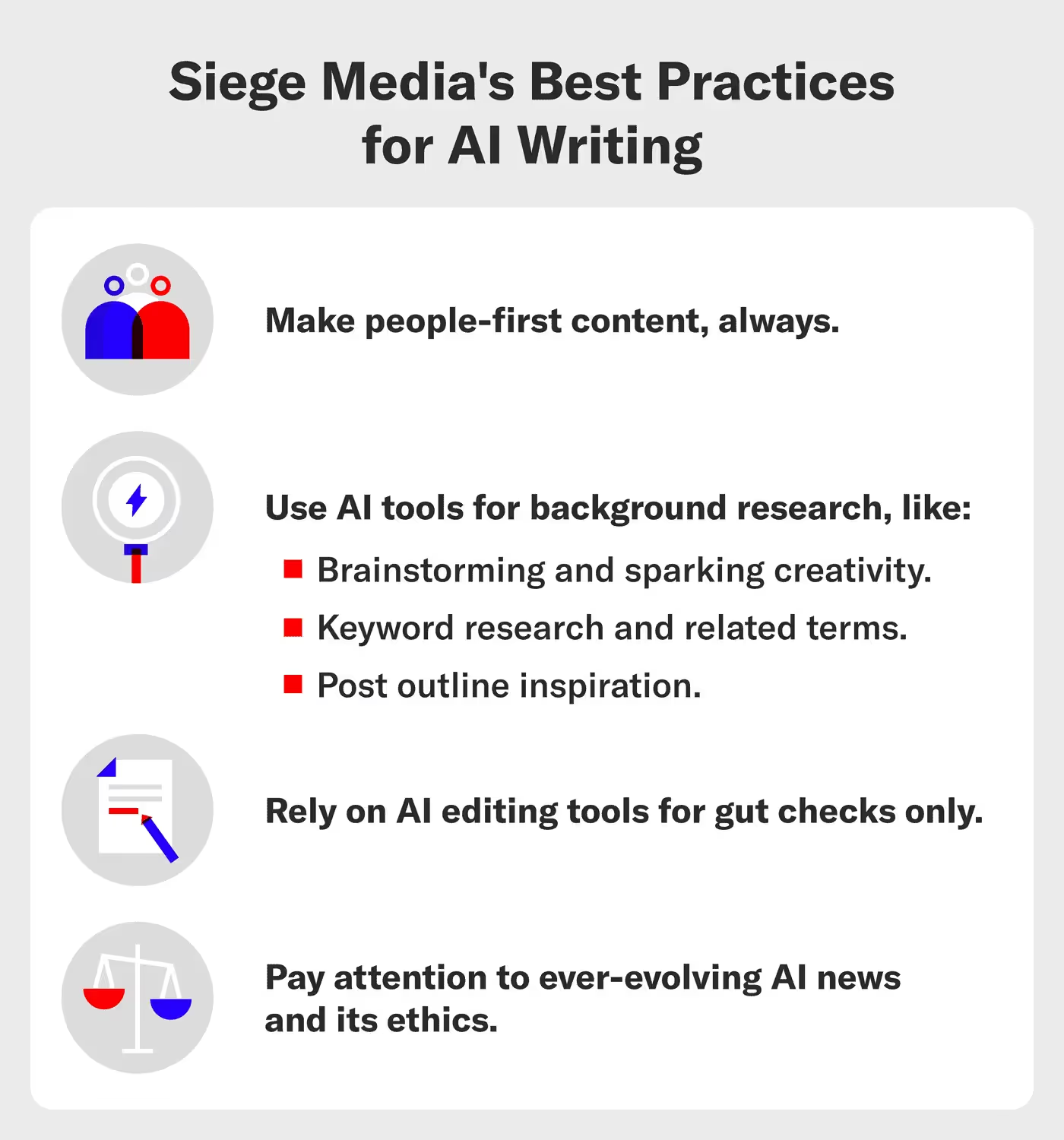
How do you stay ahead?
This transformative moment in marketing reveals a simple truth: the democratization of AI is just the beginning—a springboard for marketers with bold visions. The future will favor those who use AI not merely as a tool, but as a catalyst to realize their most ambitious ideas.
Neil Patel predicts that one of the leading digital marketing trends for 2025 will be the evolution of SEO from "Search Engine Optimization" to "Search Everywhere Optimization."
AI has made content creation cheaper, more scalable, and more impactful when done right. As a result, a major shift is emerging: consumers will increasingly turn to AI platforms for answers instead of traditional search engines like Google. Marketers will need to adapt by creating content tailored for visibility in all AI models, as well as in traditional SEO search.
To start using AI effectively in your marketing, begin with a single important area where AI could help - like blog content or social media posts.
Track your results carefully and write down what works and what doesn't. Set specific goals for what you want to achieve. Once these basics are in place, start testing new approaches and different types of content. When you find something that works well, move quickly to expand it.
Keep measuring your results and adjusting based on what the data tells you.We are all in unprecedented situations as content marketers, but the future belongs to bold marketers who dream big, act quickly, and execute with precision.
If that is you, book a call with an AirOps expert to see how you can stay ahead.
Win AI Search.
Increase brand visibility across AI search and Google with the only platform taking you from insights to action.
Get the latest on AI content & marketing
Get the latest in growth and AI workflows delivered to your inbox each week



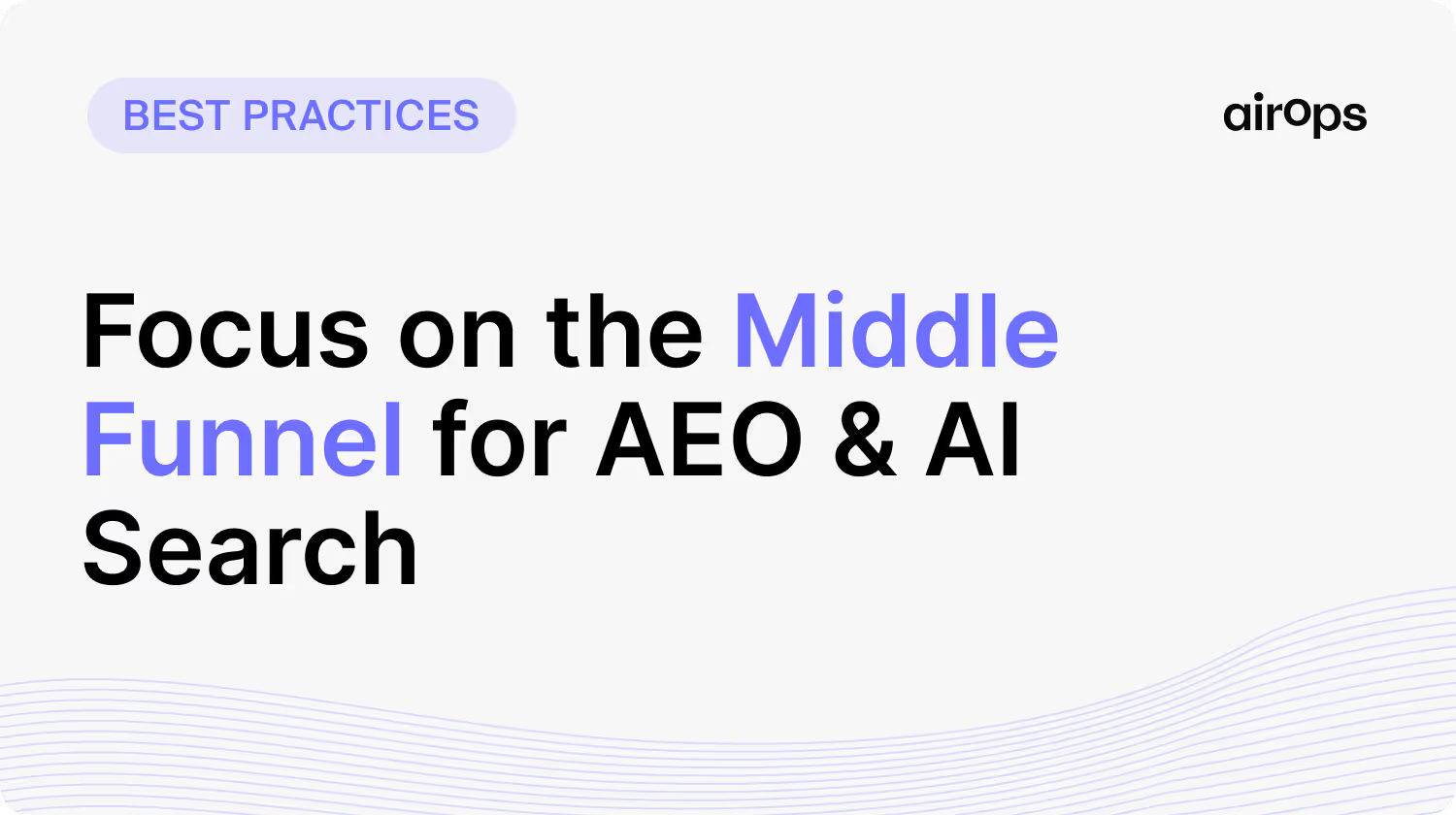

.avif)
.avif)
